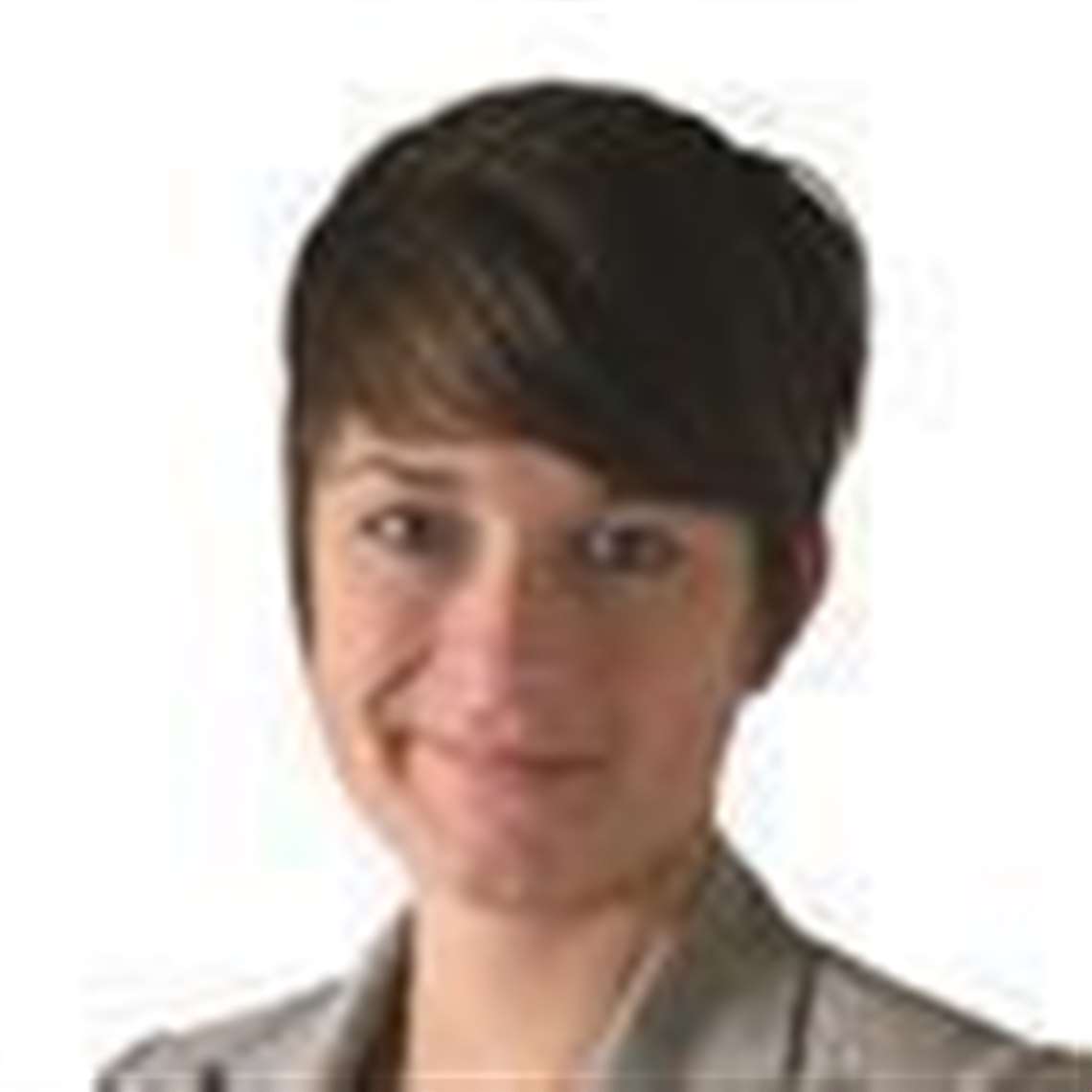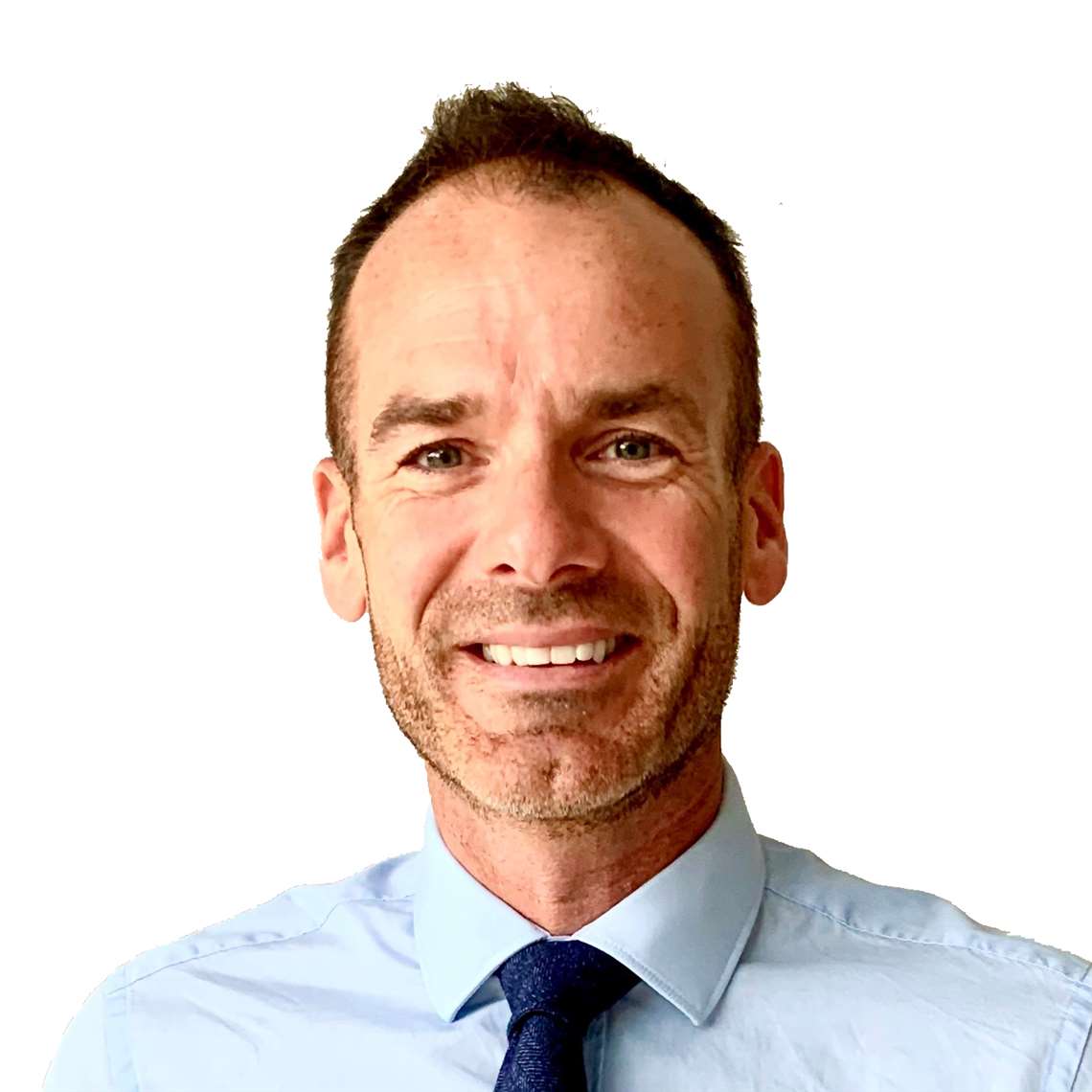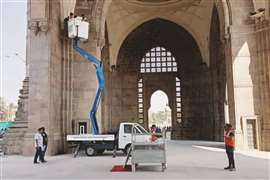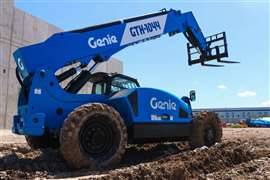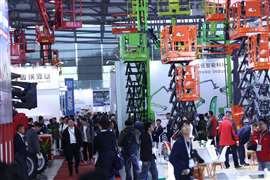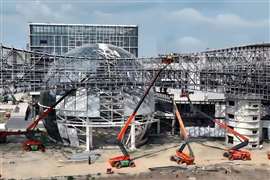Read this article in Français Deutsch Italiano Português Español
How to make headway in India’s access market
21 February 2025
Anirban Ghosh has been in the Indian access sector for more than 14 years, having set up his own distributorship in 2022, and is focusing on opportunities for a young company in a fragmented market.
As with many young MEWP markets, India has a complex emerging rental scene, while manufacturers calculate their approach in an increasingly competitive market.
Nexa Global Infra Solutions is one of the industry’s trailblazers, having been the first company to focus on new imports of spider lifts in India.
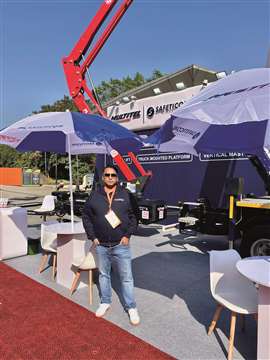 Anirban Ghosh, founder of Nexa Global Infra Solutions. (Image: Nexa Global Infra Solutions).
Anirban Ghosh, founder of Nexa Global Infra Solutions. (Image: Nexa Global Infra Solutions).
As a distributor of Platform Basket spiders, Multitel Pagliero truck mounts and Trackunit software, the company, which works under the brand name of Safeticon, has chosen to focus on niche access equipment, rather than taking on the mainstream boom and scissor sector.
Its founder Anirban Ghosh has 12 years experience in MEWPs, having previously been JLG’s representative in India, covering sales to service, and as such has an expert view of industry dynamics.
While truck mounts may not be deemed niche in more mature markets, they are in India where cranes are commonly used alongside the traditional scaffolding.
In addition, adds Ghosh, “We started the trend of new spiders on construction sites, where booms and scissors were used before.”
This is set against the growing requirement for aerial platforms generally in the country and a gradual shift to newly-bought equipment, rather than rental companies building their fleets with used equipment imported from other countries.
In the previous three to four years the ratio has been around 50%-60% in favour of used, but that has now dropped to 40%-45% says Ghosh, with new imports being dominant.
“Over the next year Ghosh forecasts there will be around 2,500 new machines sold in the country, including scissors and booms, thanks considerably to JCB’s scissor manufacturing presence in the country which is has been followed by Manitou and Genie. Of those 2,500 units, 1,000 will come from Chinese manufacturers, with some 400 imported by OEMs based in North America and Europe.
Over the next five years the percentage of new MEWPs sold in India should rise by 25%. Scissors make up the majority of new MEWP sales in the country overall, with almost 90% being new, compared to 40% when it comes to boom lifts.
“In five years’ time 100% of scissors will be new and booms will be up by 20% to around 60% - 65% of the total,” says Ghosh.
New perspective
While OEMs such as Genie, JCB and Manitou have set up production facilities in the country, the Chinese manufacturers are honing in on India too with six of them having established bases there in the last 18 months.
“With the US and European markets down economically and the anti-dumping tariffs there, India will be a focus and every few months another manufacturer sets up an office in India.”
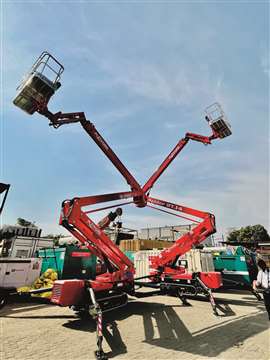 Nexa represents Platform Basket spiders and rail unts in India. (Image: Nexa Global Infra Solutions).
Nexa represents Platform Basket spiders and rail unts in India. (Image: Nexa Global Infra Solutions).
The number of MEWPs imported to the country will increase by 40%-50% in five years’ time, Ghosh forecasts, with 16,000 units operating in the country already.
Alongside the rise in new machines entering the country, investment in used equipment is on the rise too, meaning that around 7,000 new and used units will be added to the country’s total fleet over the next five years, bringing it to 23,000 - 24,000 machines by the end of the decade.
Looking ahead 10-15 years, how many MEWPs will there be in India? Ghosh answers, “If you look at China there are hundreds of thousands of machines, so the potential for growth in India is huge.
“Many areas, such as scaffolding, will be replaced by MEWPs, mainly 12m, 14m and 16m scissors, and from 35m to 45-50m booms.”
However, Ghosh says that while India’s human population, of 1.4 billion, is fairly similar to China’s, its MEWP population will not match the astounding growth found in China over the last decade. Rather, the country is looking at a 10% - 15% increase year-on-year.
Differing strategies
“The strategy of the two countries is quite different,” Ghosh explains. “China has grown as a result of its government pushing manufacturers to make more – they finance those companies to become the world’s biggest and supply the global industry.”
“In India there is no government push. We rely on imports from China and in some cases the cost of imported MEWPs are cheaper than the locally produced ones.
“They give special pricing and credit terms up to one year or even 18 months. The Indian government is not giving that kind of financial support to manufacturing here.”
Ghosh adds, “India has one tenth the production of China in terms of steel and the automotive sector is almost four times larger in China. That’s why India’s MEWP industry cannot grow as much.”
In Ghosh’s view it will be another 15 – 20 years before the MEWP population in India reaches 100,000 units, let alone the 700,000 currently found in China.
Reflecting on rental
It is a different story again when it comes to niche products like spider lifts and railway units, which Nexa Global supplies. There are around 180 spiders in India, some 80 of which are in retail, with the bulk being rental units.
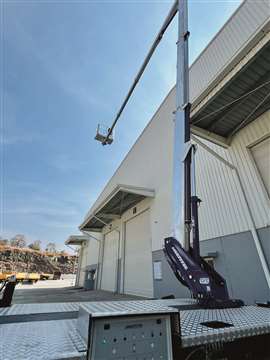 Multitel Pagliero truck mounts are also sold by Nexa Global Infra Solutions. (Image: Nexa Global Infra Solutions).
Multitel Pagliero truck mounts are also sold by Nexa Global Infra Solutions. (Image: Nexa Global Infra Solutions).
Of that hundred in the rental sector, only 10-12 would have been delivered as new equipment.
There are roughly 150-160 rental companies operating in India, of which there are 20-25 major ones with the largest being Manlift with around 2,000 machines, followed by a handful of others with 500 units or more, and a similar number with 200 plus.
“About 12 companies in India have 200 or more machines in their fleet and between them they hold 40% of India’s total rental fleet. The rest have 10 or 20 machines each.”
The long-term future of the rental sector is uncertain but Ghosh believes it is unlikely that that there will be consolidation of the market driven by large rental outfits from Europe, the US or even China. “The market is too fragmented. It would be difficult for a company like United Rentals to expand in that way and I don’t see them coming into the market until it reaches at least 25,000 units.
“Most of the rental companies in India are owner based and have one or two people who started the business and are slowing growing, adding not more than 40 machines a year.”
One area of major growth, in relative terms, has been the increase in boom lifts of 60ft and above, and up to 140ft. “These are proving very popular.”
Standard requirements
Nexa Global Infra Solutions is a member of the Aerial Platform Association of India, along with 100 other companies. Apart from supporting its members the association is looking to develop the market in the country.
“The association is active and there is a primary focus on identifying backlisted clients.” Now, Ghosh adds, there is an opportunity for it to adapt further to help serve manufacturers as they attempt to grow the market.
“The safety standards in the country are still lacking, and we need to discuss ways to create cohesion in the market and agree rental rates as well as focusing on an equal quality of rental equipment.
“We also believe that manufacturers should support training – this is one of the problems. When I was at JLG we would train the operators and now we do the same at our company. But many OEMs don’t support it – they focus on sales and there is pressure on them to do that.
“So, both manufacturers and rental companies need got to get together to ensure operators are qualified and trained.
“Right now, the operator becomes the technician, which is really bad for the industry, as they don’t have knowledge of mechanics or electrical components. Once we have the quality of engineers then we can train them in our specific area.”
Ghosh adds, “One of the biggest challenges is that rental rates are not growing that much as the cost of the equipment is going up. As the Dollar and Euro appreciates against the Indian Rupee, so the cost to import is higher. The Chinese machines also sell in dollars so they have gone up too.”
However, while European and US OEMs are finding it harder to sell in country due to pricing, availability of machines and the length of repayment terms, Chinese manufacturers can offer payment periods of as much as 1.5 years, says Ghosh.
The sector saw a peak in rental rates just after the Covid pandemic from 2022 to mid-2023, but since then they have dropped 7.5% with scissor rates having sunk less than booms at 5% compared to 10%.
Taking opportunities
There is a window of opportunity in spiders, however. “Spiders are still very specialized in India and numbers have been limited. But in the last five years there has been a lot of airport construction.
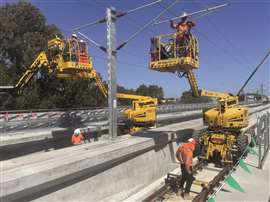 Railway construction is an area that Nexa is looking to expand into. (Image: Nexa Global Infra Solutions).
Railway construction is an area that Nexa is looking to expand into. (Image: Nexa Global Infra Solutions).
“They are being used inside terminals where a normal boom lift cannot go as it is two to three time heavier. We have seen far more acceptance of spiders in the last 1.5 years, primarily due to the demands from airport construction.”
“So, spiders will grow at a much faster rate than scissors or booms as the market is so much smaller, and every year we will see another 25 machines.”
Until January the vast majority of spiders entered the market as used equipment. “From January this year I started to push new machines by educating customers.
“Some of their spiders were 10 years old, and because there was no service knowledge they could stand for 20 days waiting for repairs.
“I make sure that we effectively work as an OEM and Platform Basket provides us good support with that.”
In the immediate future Ghosh is looking to expand his company into scissors and boom lifts but it will be on his terms, he says, and not with one of the Chinese manufacturers. Instead, he is in talks with a long established non-Chinese manufacturer with the view of supplying product on a more niche basis to specific applications.
Further details will follow in the coming months, once the plans are firmed up.
STAY CONNECTED



Receive the information you need when you need it through our world-leading magazines, newsletters and daily briefings.
CONNECT WITH THE TEAM

